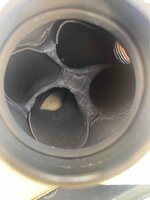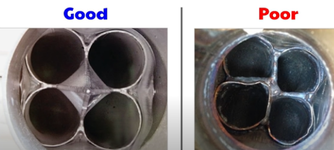Since mine will be a street/track car in CA, long tube headers are off the table for me. It's frustrating to hear tuners talk about leaving significant power on the table without them on my supercharged/E85 Coyote. There are some CARB compliant shortys available. I've been reading diverging stories, power gained or imperceptible improvement over the stock manifolds. Until now I've settled for the stock exhaust but with my engine out of the car I'm revisiting the idea. This would be the perfect time to upgrade, if it is indeed an upgrade. I was considering having my stock manifolds ceramic coated for heat control, but some of these shortys are available with ceramic. Much of the cost of an upgrade would be offset by not needing to coat my manifolds. So I put it out to the knowledgeable folks here on TMO.
Shortys or OEM?
Shortys or OEM?














